Left ventricular (LV) size and shape is important for quantifying cardiac remodelling in response to cardiovascular disease. Geometric remodelling indices have been shown to have prognostic value in predicting adverse events in the clinical literature, but these do not independently describe shape changes. We developed a method for deriving orthogonal shape components directly from any set of clinical indices.
Six clinical indices were chosen and ranked based on their variance in the population:
- End-Diastolic Volume Index (EDVI), which is end-diastolic volume (EDV) divided by body surface area.
- Sphericity = EDV divided by the volume of a sphere with a diameter corresponding to the major axis at ED in LV long-axis view.
- Ejection Fraction (EF), which is (EDV - ESV) / EDV, where ESV = End-Systolic Volume.
- Relative Wall Thickness (RWT) = twice the posterior wall thickness divided by the ED diameter.
- Conicity = the ratio of the apical diameter (defined as the diameter of the endocardium one third above the apex) over the basal diameter at ED.
- Longitudinal Shortening (LS), which is the difference of the distance of the central basal point to the apical point at ED and ES over the distance at ED.
- End-Diastolic Volume
- Ejection Fraction
- Conicity
- Sphericity
- Longitudinal Shortening
- Relative Wall Thickness
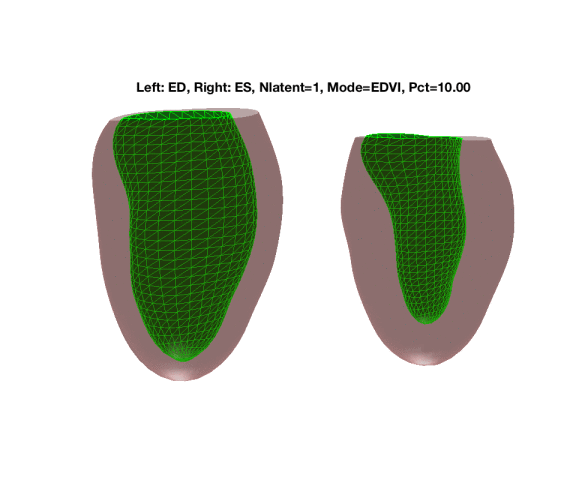
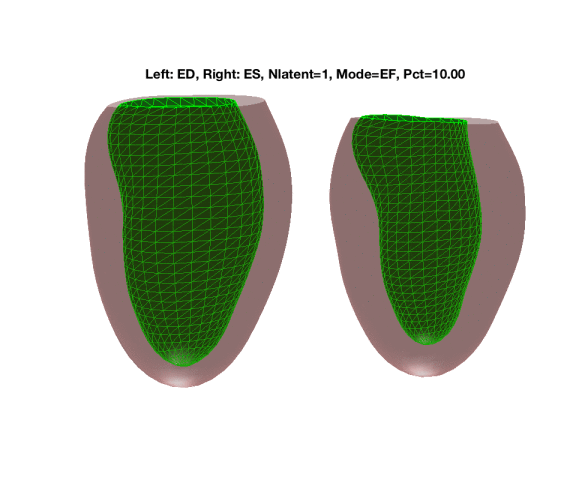
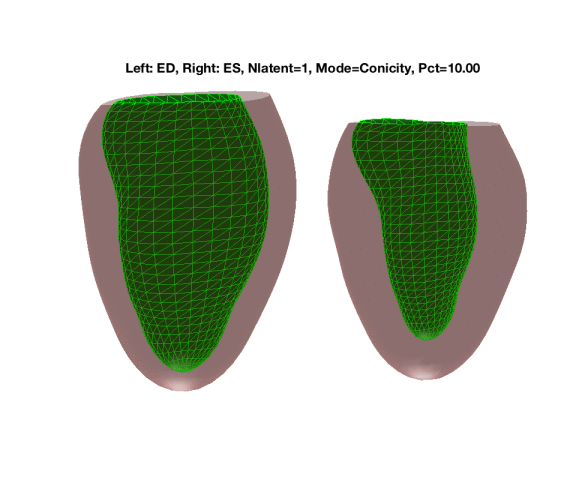

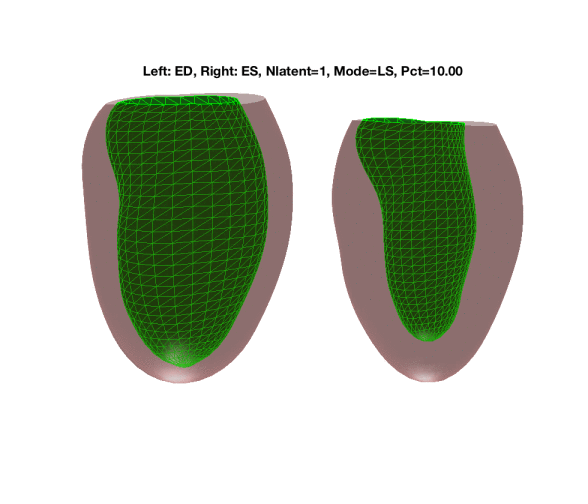
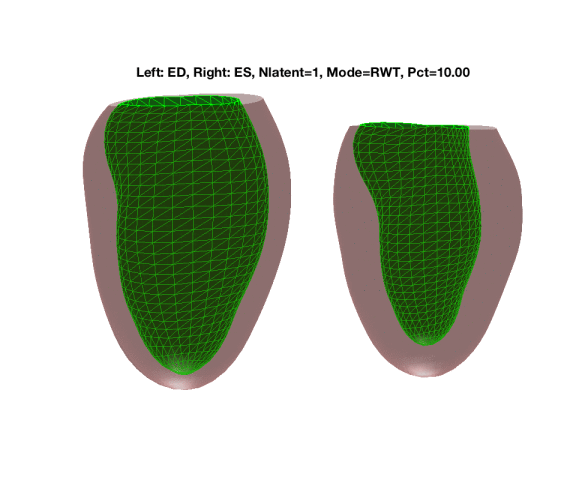
Lorem ipsum dolor sit amet, consectetur adipiscing elit. Ut elit tellus, luctus nec ullamcorper mattis, pulvinar dapibus leo.
The method used an iterative of partial least square (PLS) regressions followed by Gram-Schmidt orthogonalization procedures. At each step, the contribution of the previous component was removed mathematically from the shape description.
Read more information about this study from [Zhang et al., GigaScience 2017] paper.